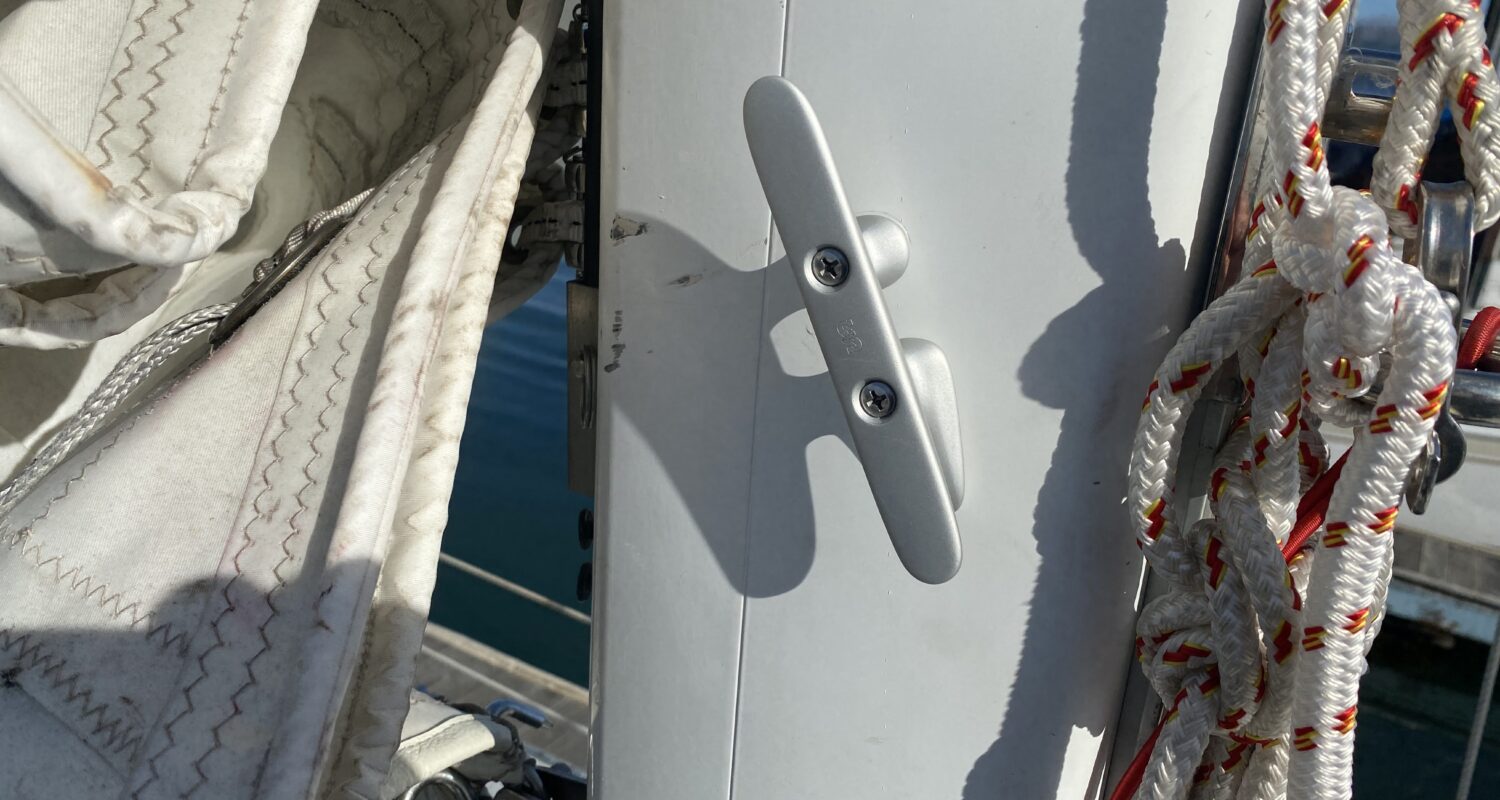Summary: Adding new cleats or attachments to a mast is quite simple if you have the correct size tap set to match the fasteners.
As part of my summer haul-out I added a topping lift line to the front of my mast as well as a spinnaker halyard. Both of these lines end at the base of the mast and need a place to hang and/or be tied off when in use. I needed to add some cleats to my mast.
I asked for suggestions in the Ericson forum and got some good ideas. I wound up buying these self-jamming Schaefer cleats from Defender. They differ from normal cleats in that one side is designed to grab the line placed therein.

Also on the Ericson forum I had read about people installing cam cleats on the mast, so that one could raise a sail at the mast and then put the halyard in a cam cleat before heading back to the cockpit. Then, once in the cockpit, the tension in the line from a winch would pull the halyard out of the temporary cam cleat for the final few feet of sail-raising. I thought I might be able to replicate this process with a self jamming cleat if the fixture is was oriented in the right direction.
For fasteners I used 1″ long 10-24 stainless steel screws. 10 describes in imperial/SAE/non-metric terms the diameter of the screw and 24 is the number of threads per inch. Another alternative would have been 10-32 screws (yielding more, finer threads into the mast). There seem to be arguments for both types, but I was convinced that fewer, deeper threads would work better.
I thought the 1″ depth would be long enough to grab the meat of the wall of the mast without penetrating into the mast cavity, where my nice halyards slide up and down and could be chafed by an intruding machine screw.

I used a Dewalt tap set that I bought at Home Depot to make drill and then tap the holes. It tool all of 5 minutes.
Prudence required that I put Tef-Gel on the screws before tightening them into the mast. Tef-Gel impairs corrosion between the different stainless steel screw and the aluminum mast, which is nice, but the Gel itself is gooey and sticks to everything. I learned when I was rebuilding my boom the importance of limiting this dissimilar metal corrosion.
Final product as installed. I’ll need to test the self-jamming cleat halyard trap method on my next sail.




